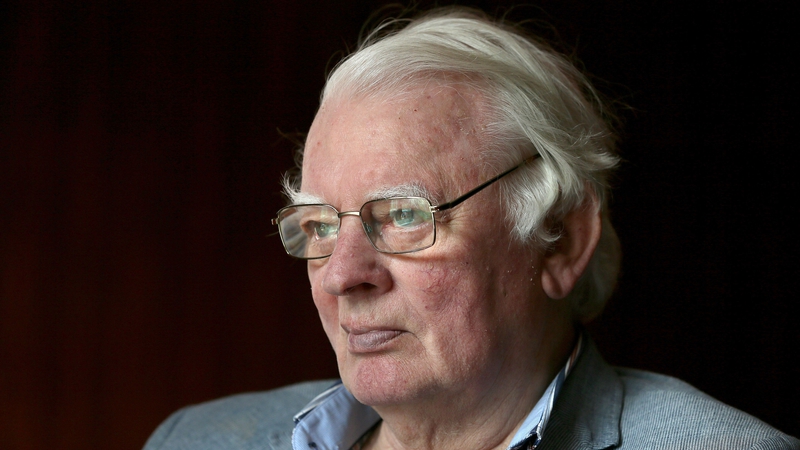UDAY RANA
PUBLISHED YESTERDAY:format(jpeg)/cloudfront-us-east-1.images.arcpublishing.com/tgam/VUYSPQPKJJAIFN4SHOKPITRMUM.JPG)
Gagandeep Sidhu, a truck driver based in Brampton, had a bad experience with an employer refusing to pay wages due.
:format(jpeg)/cloudfront-us-east-1.images.arcpublishing.com/tgam/VUYSPQPKJJAIFN4SHOKPITRMUM.JPG)
Gagandeep Sidhu, a truck driver based in Brampton, had a bad experience with an employer refusing to pay wages due.
RAMONA LEITAO/THE GLOBE AND MAIL
Gagandeep Sidhu was at the end of his rope in June. With $50 left in his bank account and his employer refusing to pay the $5,549 in wages they owed him, the 24-year-old had nowhere to turn. “I was completely broken,” the dump-truck driver said.
That’s when Mr. Sidhu saw a Facebook post that caught his attention. The post, written in Punjabi, his first language, promised to help students and workers to recover withheld wages from their employers.
In India and Canada’s international student recruiting machine, opportunity turns into grief and exploitation
The post was published by the Naujawan Support Network (NSN), a Brampton, Ont.-based collective of Punjabi-Canadian activists. The group, named after the Punjabi and Urdu word for “youth,” supports young newcomers trying to uphold their rights against exploitative employers.
The group, which began with roughly a dozen core members, now helps advocate for young workers who fall between the cracks in Brampton. Most are newcomers working their way toward becoming permanent residents. While establishing their new lives in Canada, some find they have no choice but to work below minimum wage and get paid under the table. Others are too scared to confront their employers when things go wrong. NSN stands up for those who find their backs against the wall.
Simran Dhunna, 25, one of NSN’s earliest members, says employers withholding pay from international students and temporary workers is surprisingly common. When NSN first launched its social-media accounts, the group received a flood of complaints from workers – hearing about everything from a trucking company that was forcing its employees to drive damaged trucks to a food-business owner who refused to pay a worker his earned wages. In the months since, NSN has attracted hundreds of members and supporters across Brampton and beyond, establishing an online chat network of more than 250 people.
Feeling helpless about his situation, Mr. Sidhu was one of those who turned to NSN for support. “The first thing they did was to tell me not to fear anything. And I needed to hear that,” he said. Mr. Sidhu, like many others involved with NSN’s efforts, is in Canada on a work permit. He was worried speaking out could cause his employer to retaliate, which might hinder his application for permanent residency. NSN members reassured him that Canadian law protects his right to protest.:format(jpeg)/cloudfront-us-east-1.images.arcpublishing.com/tgam/2QZ2QXZ25VDE3H2XVHELF5JRK4.JPG)
Members of the Naujawan Support Network and their supporters gather at James William Hewson Park in Brampton, Ont., for a rally to stop exploitation of workers, on Oct. 2.TIJANA MARTIN/THE GLOBE AND MAIL
NSN is currently involved in several active campaigns supporting immigrant workers, including Mr. Sidhu. He still has yet to see the money he says he’s owed, but has joined NSN as a core member to help those in similar situations. “I have to keep fighting for others like me, who think they are powerless,” he said. “I want to tell them that there is strength in numbers.”
The first step NSN takes against an employer is to send them a letter. “That is a way of putting them on notice. If an employer pays up after the first letter, we back off. There is no beef with someone who does right by their worker,” Ms. Dhunna said.
When an employer refuses to pay, NSN launches a protest. In early October, they supported truck driver Gurmukhjeet Singh, who protested outside his former employer’s home after filing a claim in labour court when the employer did not pay his wages for the month of June, 2020. He won a payment order in March this year, but the employer filed an appeal to the Canada Industrial Relations Board. “Court appeals can take years – I had to do more than that,” he said.
Ontario’s Minister of Labour, Monte McNaughton, said last month the government wants to regulate temporary help agencies, noting inspections have shown many such agencies in Ontario are illegally paying workers below minimum wage and denying other basic employment rights. The provincial government has proposed legislation that would require temp agencies to obtain a licence to operate after being properly vetted.
Newcomers, including work-permit holders, are often taken advantage of and suffer mistreatment at the workplace because they are not yet permanent residents or citizens, Mr. Sidhu said. Many of the businesses NSN targets are owned by fellow South Asians – the group tries to appeal to their sense of community in not-so-subtly reminding them of their obligations.
“Our community places a huge value on the concept of izzat – or honour,” Mr. Singh said. “No matter how stubborn an employer is, they don’t want to be disgraced in the eyes of their neighbours. That is why we put up posters in their neighbourhoods, write about them on social media and carry out marches outside their homes.”
But such tactics have led to accusations that NSN is carrying out a form of vigilante justice. NSN founding member Ms. Dhunna insists the group isn’t looking to replace proper legal channels, but only provide much-needed support to vulnerable workers. They’re careful to vet workers’ complaints, and also give employers the chance to respond, she added.
“We meet with them in person and assess the hard evidence,” she said. “If we are not convinced that there is a case or if we feel someone has an axe to grind, we turn them away.”
Gagandeep Sidhu was at the end of his rope in June. With $50 left in his bank account and his employer refusing to pay the $5,549 in wages they owed him, the 24-year-old had nowhere to turn. “I was completely broken,” the dump-truck driver said.
That’s when Mr. Sidhu saw a Facebook post that caught his attention. The post, written in Punjabi, his first language, promised to help students and workers to recover withheld wages from their employers.
In India and Canada’s international student recruiting machine, opportunity turns into grief and exploitation
The post was published by the Naujawan Support Network (NSN), a Brampton, Ont.-based collective of Punjabi-Canadian activists. The group, named after the Punjabi and Urdu word for “youth,” supports young newcomers trying to uphold their rights against exploitative employers.
The group, which began with roughly a dozen core members, now helps advocate for young workers who fall between the cracks in Brampton. Most are newcomers working their way toward becoming permanent residents. While establishing their new lives in Canada, some find they have no choice but to work below minimum wage and get paid under the table. Others are too scared to confront their employers when things go wrong. NSN stands up for those who find their backs against the wall.
Simran Dhunna, 25, one of NSN’s earliest members, says employers withholding pay from international students and temporary workers is surprisingly common. When NSN first launched its social-media accounts, the group received a flood of complaints from workers – hearing about everything from a trucking company that was forcing its employees to drive damaged trucks to a food-business owner who refused to pay a worker his earned wages. In the months since, NSN has attracted hundreds of members and supporters across Brampton and beyond, establishing an online chat network of more than 250 people.
Feeling helpless about his situation, Mr. Sidhu was one of those who turned to NSN for support. “The first thing they did was to tell me not to fear anything. And I needed to hear that,” he said. Mr. Sidhu, like many others involved with NSN’s efforts, is in Canada on a work permit. He was worried speaking out could cause his employer to retaliate, which might hinder his application for permanent residency. NSN members reassured him that Canadian law protects his right to protest.
:format(jpeg)/cloudfront-us-east-1.images.arcpublishing.com/tgam/2QZ2QXZ25VDE3H2XVHELF5JRK4.JPG)
Members of the Naujawan Support Network and their supporters gather at James William Hewson Park in Brampton, Ont., for a rally to stop exploitation of workers, on Oct. 2.TIJANA MARTIN/THE GLOBE AND MAIL
NSN is currently involved in several active campaigns supporting immigrant workers, including Mr. Sidhu. He still has yet to see the money he says he’s owed, but has joined NSN as a core member to help those in similar situations. “I have to keep fighting for others like me, who think they are powerless,” he said. “I want to tell them that there is strength in numbers.”
The first step NSN takes against an employer is to send them a letter. “That is a way of putting them on notice. If an employer pays up after the first letter, we back off. There is no beef with someone who does right by their worker,” Ms. Dhunna said.
When an employer refuses to pay, NSN launches a protest. In early October, they supported truck driver Gurmukhjeet Singh, who protested outside his former employer’s home after filing a claim in labour court when the employer did not pay his wages for the month of June, 2020. He won a payment order in March this year, but the employer filed an appeal to the Canada Industrial Relations Board. “Court appeals can take years – I had to do more than that,” he said.
Ontario’s Minister of Labour, Monte McNaughton, said last month the government wants to regulate temporary help agencies, noting inspections have shown many such agencies in Ontario are illegally paying workers below minimum wage and denying other basic employment rights. The provincial government has proposed legislation that would require temp agencies to obtain a licence to operate after being properly vetted.
Newcomers, including work-permit holders, are often taken advantage of and suffer mistreatment at the workplace because they are not yet permanent residents or citizens, Mr. Sidhu said. Many of the businesses NSN targets are owned by fellow South Asians – the group tries to appeal to their sense of community in not-so-subtly reminding them of their obligations.
“Our community places a huge value on the concept of izzat – or honour,” Mr. Singh said. “No matter how stubborn an employer is, they don’t want to be disgraced in the eyes of their neighbours. That is why we put up posters in their neighbourhoods, write about them on social media and carry out marches outside their homes.”
But such tactics have led to accusations that NSN is carrying out a form of vigilante justice. NSN founding member Ms. Dhunna insists the group isn’t looking to replace proper legal channels, but only provide much-needed support to vulnerable workers. They’re careful to vet workers’ complaints, and also give employers the chance to respond, she added.
“We meet with them in person and assess the hard evidence,” she said. “If we are not convinced that there is a case or if we feel someone has an axe to grind, we turn them away.”
:format(jpeg)/cloudfront-us-east-1.images.arcpublishing.com/tgam/63LR5S6CNRHVDIIJQJBNOHYWJ4.JPG)
Members of the Naujawan Support Network gather at James William Hewson Park in Brampton for a rally to stop the exploitation of workers on Oct. 2.
TIJANA MARTIN/THE GLOBE AND MAIL
Sara Slinn, associate dean at York University’s Osgoode Hall Law School, said things are particularly precarious for independent contractors. They don’t have the same rights as employees and have few options other than filing an expensive lawsuit against the employer. “In those cases, social pressure has the prospect of getting them paid more quickly than the formal process, which can be very costly and difficult,” she said. NSN claims they have managed to get more than $45,000 in wages for their members, either directly or indirectly through their campaigns.
Some NSN members, such as truck driver Amandeep Virk, have had success in working with the group to pressure their employers to do the right thing. Mr. Virk, 31, was owed $3,054 by his former employer. “I had given up all hope. I even missed the window in which I could have filed a [legal] case, because I didn’t know how to file a claim,” he said.
In June, Mr. Virk showed up to an NSN protest in support of fellow truck driver Mr. Sidhu. He spoke at the rally, sharing his own story. The video of his speech went viral, even reaching his employer.
“He asked me if I am planning a protest against him. I said we were, but we were planning to give him fair warning first,” Mr. Virk said. “He was quiet for a moment, then told me to collect my cheque in a few days. When I got to the place, he told me not to come inside – he didn’t want the other employees to see him handing me my cheque out of pressure.”
For other workers such as Mr. Sidhu, however, the fight continues. His former employer has sent legal notices to him and other members of the NSN, claiming defamation. But, bolstered by the group’s support, his resolve remains strong.
“It may take longer than I had thought, but I will win,” he said firmly. “I know I will win, because I am not alone.”
Sara Slinn, associate dean at York University’s Osgoode Hall Law School, said things are particularly precarious for independent contractors. They don’t have the same rights as employees and have few options other than filing an expensive lawsuit against the employer. “In those cases, social pressure has the prospect of getting them paid more quickly than the formal process, which can be very costly and difficult,” she said. NSN claims they have managed to get more than $45,000 in wages for their members, either directly or indirectly through their campaigns.
Some NSN members, such as truck driver Amandeep Virk, have had success in working with the group to pressure their employers to do the right thing. Mr. Virk, 31, was owed $3,054 by his former employer. “I had given up all hope. I even missed the window in which I could have filed a [legal] case, because I didn’t know how to file a claim,” he said.
In June, Mr. Virk showed up to an NSN protest in support of fellow truck driver Mr. Sidhu. He spoke at the rally, sharing his own story. The video of his speech went viral, even reaching his employer.
“He asked me if I am planning a protest against him. I said we were, but we were planning to give him fair warning first,” Mr. Virk said. “He was quiet for a moment, then told me to collect my cheque in a few days. When I got to the place, he told me not to come inside – he didn’t want the other employees to see him handing me my cheque out of pressure.”
For other workers such as Mr. Sidhu, however, the fight continues. His former employer has sent legal notices to him and other members of the NSN, claiming defamation. But, bolstered by the group’s support, his resolve remains strong.
“It may take longer than I had thought, but I will win,” he said firmly. “I know I will win, because I am not alone.”
:format(jpeg)/cloudfront-us-east-1.images.arcpublishing.com/tgam/CF3LVHROXVMOZKE65ZGPGVZU2Y.JPG)
:format(jpeg)/cloudfront-us-east-1.images.arcpublishing.com/tgam/U5JHBKQXNJDWLKVEWJJNAYDGAM.JPG)













